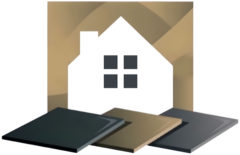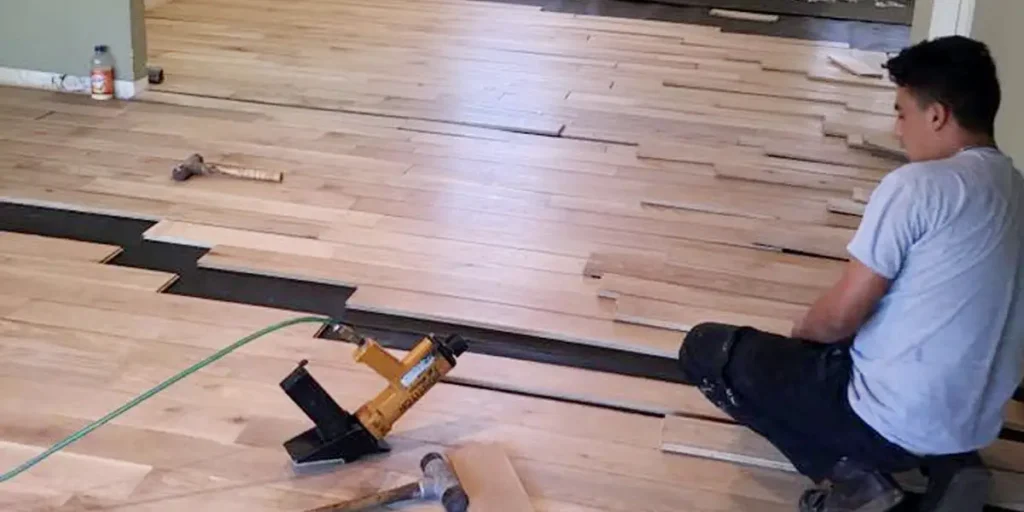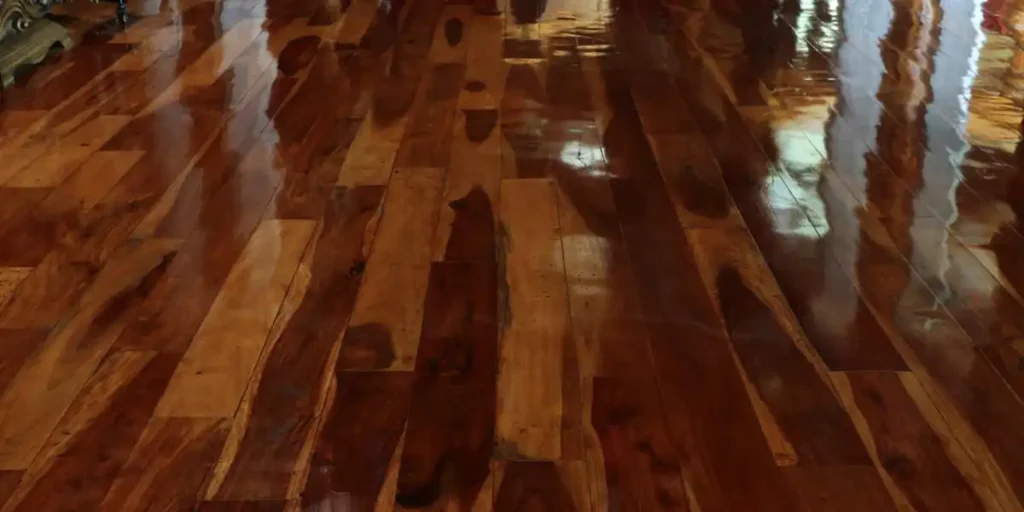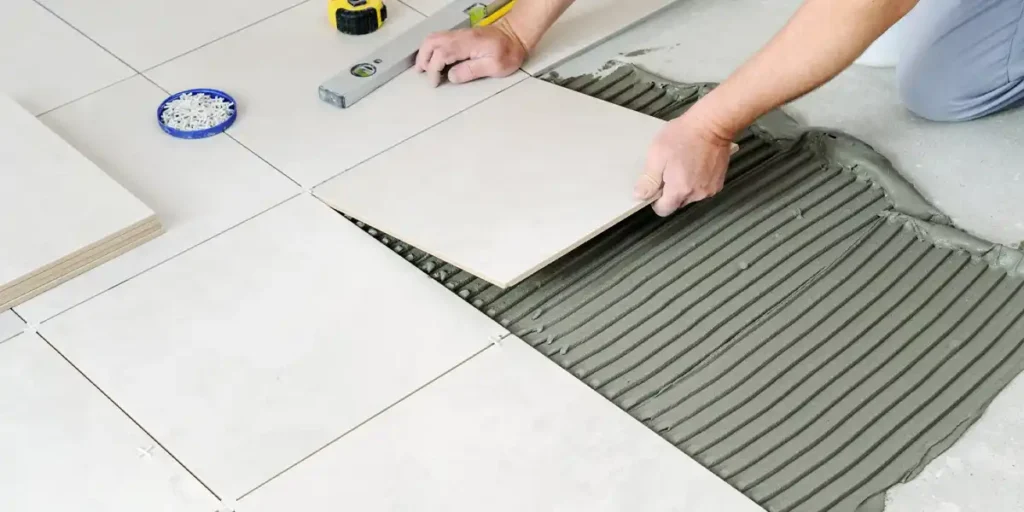Laminate flooring is a versatile, affordable, and stylish option for homeowners, but what makes it so popular?
Understanding what laminate flooring is made of provides valuable insights into its performance, durability, and appeal.
This comprehensive guide breaks down each layer of laminate flooring, highlighting its composition and how it contributes to the flooring’s overall quality.
A Layer-by-Layer Look at Laminate Flooring
Laminate flooring is a multi-layered composite material, with each layer designed for specific purposes. From durability to aesthetics, every component plays a role in making laminate flooring an excellent option for homes and businesses.
The Core: The Foundation of Durability
At the heart of laminate flooring lies the core layer, typically made of high-density fiberboard (HDF) or sometimes medium-density fiberboard (MDF). This core provides structural integrity, allowing the planks to withstand weight and impact.
- HDF Core Features:
- High strength and density.
- Resistant to bending and buckling under pressure.
- Contributes to the overall thickness, which ranges from 6mm to 12mm.
- Importance of Core Quality:
The core’s density directly impacts the flooring’s durability and soundproofing. Higher-quality cores offer better resistance to wear and tear, ensuring longevity.
The Decorative Layer: Where Beauty Meets Design
The decorative layer is where laminate flooring truly shines. This layer features a high-resolution photographic image that replicates the appearance of natural materials like hardwood, stone, or tile.
- Material: A resin-coated film or paper.
- Design Versatility: From rustic oak to sleek marble, laminate flooring offers endless design possibilities.
- Scratch Resistance: The decorative layer often includes additional coatings for scratch and stain resistance, maintaining the flooring’s pristine appearance over time.
The Wear Layer: The Shield Against Damage
The wear layer is a transparent top coat that protects the flooring from scratches, stains, and fading.
- Material: Typically made of melamine resin or aluminum oxide.
- Durability: The thickness of the wear layer determines the flooring’s ability to withstand heavy foot traffic and everyday wear.
- Why It Matters:
- Thicker wear layers are ideal for high-traffic areas.
- This layer ensures the flooring’s longevity and maintains its glossy finish.
The Backing Layer: The Unsung Hero
The backing layer is the bottommost part of the plank, designed to provide stability and moisture resistance.
- Material: Usually made of melamine or another moisture-resistant material.
- Function:
- Prevents warping by acting as a barrier against moisture from the subfloor.
- Adds structural support to the plank, ensuring it remains level.
The Underlayment: Cushioning and Support
Although not part of the laminate plank itself, the underlayment plays a critical role in enhancing the flooring’s performance.
- Materials Used: Foam, cork, or recycled rubber.
- Benefits:
- Adds cushioning for comfort underfoot.
- Dampens noise, making it ideal for multi-story homes.
- Provides an extra layer of insulation and moisture protection.
Advantages and Disadvantages of Laminate Flooring
Advantages of Laminate Flooring
1. Affordability
One of the biggest advantages of laminate flooring is its cost-effectiveness. Laminate is significantly less expensive than hardwood or tile, yet it offers a similar aesthetic. This makes it an excellent choice for budget-conscious homeowners who want the look of natural materials without the hefty price tag. Modern manufacturing techniques have made laminate nearly indistinguishable from real wood or stone, further enhancing its value.
2. Durability
Laminate flooring is designed to withstand the demands of busy households. Its wear layer is resistant to scratches, stains, and fading, making it a durable option for high-traffic areas, homes with children, and pet owners. Unlike hardwood, which can show wear quickly in active spaces, laminate maintains its appearance with minimal effort.
3. Ease of Maintenance
Keeping laminate flooring in pristine condition is relatively simple. Regular sweeping or vacuuming removes dust and debris, while occasional damp mopping handles more thorough cleaning needs. Its resistance to stains means most spills can be wiped up without leaving a mark, making it a low-maintenance flooring option.
4. Variety
Laminate flooring is available in a vast array of designs, colors, and textures. From rustic oak to sleek marble, there’s a style to suit virtually any decor. Advanced printing technology allows for realistic wood and stone finishes, offering homeowners incredible design versatility.
5. Eco-Friendly Options
Many manufacturers now produce laminate flooring using sustainable materials and processes. Recycled content is often used in the core layer, and the production process typically requires fewer resources than hardwood, making laminate a more eco-friendly choice.
Disadvantages of Laminate Flooring
1. Water Sensitivity
While some laminate flooring products are water-resistant, most are vulnerable to prolonged moisture exposure. Spills should be cleaned up quickly to prevent warping, swelling, or damage to the core.
2. Comfort
Laminate flooring can feel harder underfoot compared to carpet or vinyl. Adding a quality underlayment can help improve comfort, but it may still lack the cushioning some homeowners prefer.
3. Noise
Without proper underlayment, laminate can produce a hollow or clicking sound when walked on. This can be distracting in quiet spaces or multi-level homes.
4. Limited Lifespan
Although durable, laminate flooring typically lasts 15–25 years, which is shorter than the lifespan of hardwood. While its affordability often offsets this limitation, homeowners looking for long-term investment may consider other materials.
Conclusion
Laminate flooring is a composite of multiple layers, each contributing to its durability, aesthetics, and functionality. From the HDF core to the decorative and wear layers, every component works together to deliver a cost-effective, stylish flooring solution.
By understanding what laminate flooring is made of, you can confidently choose the right product for your home. Whether you’re renovating a bedroom, living room, or office space, laminate flooring offers a balance of affordability, durability, and style.
Looking for professional advice or installation services? Contact us, Cardenas Flooring today to explore our range of laminate options and expert guidance. Let us help you create the perfect floor for your space!
FAQs
Is laminate flooring suitable for kitchens and bathrooms?
Laminate flooring can be used in kitchens if spills are promptly cleaned, but it’s less suitable for bathrooms due to high moisture levels. Water-resistant laminate options provide better protection against humidity and occasional splashes. For areas with consistent moisture exposure, waterproof vinyl flooring is a better alternative to prevent warping or damage to the laminate core.
How does laminate flooring compare to hardwood in terms of maintenance?
Laminate flooring is much easier to maintain than hardwood. It doesn’t require refinishing and is resistant to scratches and stains, making it ideal for busy households. Regular sweeping and occasional damp mopping are sufficient for laminate, whereas hardwood needs special cleaning products and regular polishing to maintain its finish.
Can laminate flooring be refinished like hardwood?
No, laminate flooring cannot be sanded or refinished. Its surface consists of a printed design layer and a protective wear layer, which can’t be restored once damaged. If significant scratches or wear occur, replacing individual planks or the entire floor may be necessary. Proper care and preventive measures can help prolong its lifespan.
What underlayment should I use for laminate flooring?
The type of underlayment depends on your specific needs. Foam underlayment is the most common choice, providing basic cushioning and soundproofing. Cork underlayment is a premium option, offering superior insulation and noise reduction. For moisture-prone areas, consider underlayment with built-in moisture barriers to protect the laminate from potential water damage.
Does laminate flooring require special cleaning products?
Laminate flooring doesn’t require expensive cleaners but does need laminate-specific or pH-neutral products to protect its surface. Harsh chemicals like bleach or ammonia should be avoided, as they can damage the protective wear layer. DIY solutions, like diluted white vinegar and water, are effective and safe for regular cleaning.




